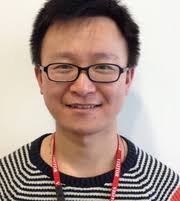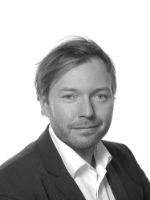Tidligere arrangementer - Side 23
Delmon Arous, BMF-seksjonen, Fysisk institutt
Våre kandidater skal lykkes faglig og profesjonelt. I andre semester ønsker vi å fokusere spesielt på grunnleggende skriftlig kommunikasjon.
Jan Heisig, RWTH Aachen
The origin and nature of the dark matter in the Universe is one of the most pressing questions in fundamental physics. The combination of particle physics and cosmology has proven to be a successful avenue leading to the well-established theory of big bang nucleosynthesis that explains the primordial abundances of light elements. In the similar manner an extrapolation to even earlier times in the Universe has led to the WIMP (Weakly Interacting Massive Particle) freeze-out paradigm - one of the best motivated explanations of the dark matter relic abundance measured today. However, despite an enormous experimental effort no conclusive hint for WIMPs has been found, putting pressure on the WIMP dark matter explanation. In this talk we examine new avenues beyond the standard WIMP picture. We show that scrutinizing the well-known co-annihilation scenario and dropping the commonly made assumption of chemical equilibrium between co-annihilating partners offers new phenomenological possibilities. By solving the full coupled set of Boltzmann equations we find solutions that accommodate the measured dark matter density while requiring very small couplings that are in accordance with current null-results in WIMP searches. [continued below]
(The slides will be available here)
Espen Rusten, BMF-section, Department of Physics
The Modular Symmetric Renormalization Group Flow of the Quantum Hall Effect
Master of Science Jonas Gliß at Department of Physics will be defending the thesis
"Passive UV remote sensing of volcanic sulphur and halogen emissions"
for the degree of PhD
Doctoral candidate Master in Physics Jonas Gliß at Department of Physics will give a trial lecture on the given topic:
"Effects from ash and aerosols in volcanic plumes on SO2 emission measurements, in specific using UV-cameras".
Thomas Konstandin, DESY
I will give an overview over the potential impact of (recent and future) observations of gravitational waves on cosmology and particle physics. This ranges from the measurement of the equation of state of QCD and the Hubble expansion parameter to (black hole) dark matter and inflation. I will dwell a little bit more on the connection to cosmological phase transitions that are mostly interesting to future space-based gravitational wave observatories.
(The slides will be available here)
Master of Science Riccard Andersson at Department of Physics will be defending the thesis
"A Machine Protection Risk Management Method for Complex Systems"
for the degree of PhD
Doctoral candidate Master in Physics Riccard Andersson at Department of Physics will give a trial lecture on the given topic:
"Imaging proton beam diagnostics, with emphasis on the target imaging system of ESS"
Analysis, design and implementation of inductive power receiving unit for wireless circuits
TEM-EELS analysis of band gap properties in ß-Ga2O3
Vi følger opp REAL undervisning med enda et seminar rettet mot gruppelærere, spesielt de som er helt nye. Men alle er velkomne - både gruppelærer, forelesere og andre ansatte som er interessert i undervisning!
Vi diskuterer høstens undervisning, og legger nå spesielt vekt på tiden fram mot eksamen. Det blir servert mat.
Photoemission current derived from multiple RPC-LAP sweeps
The Strategic Research Initiatives DIATECH and REALOMICS will present status and their plans for the future.
A seminar with guest lectures from Uppsala University
Wednesday, October 25th, 2017 Lille fysiske auditorium, 2 etasje vest, Fysikkbygningen
What are the unique competencies of a good physics teacher? How do university physics (science) departments accommodate student teachers in their courses? Which values and expectations characterise physics department culture – and how do these interact with student teachers’ aspirations, identity and learning? Who is the ‘implied student’ that teachers or lecturers target their teaching at, and what happens when the ‘implied student’ differs from the real students?
A seminar with guest lectures from Uppsala University
Wednesday, October 25th, 2017 - Place: Lille fysiske auditorium, 2 etasje vest, Fysikkbygningen
What are the unique competencies of a good physics teacher? How do university physics (science) departments accommodate student teachers in their courses? Which values and expectations characterise physics department culture – and how do these interact with student teachers’ aspirations, identity and learning? Who is the ‘implied student’ that teachers or lecturers target their teaching at, and what happens when the ‘implied student’ differs from the real students?
Constructing high-dimensional neural network potentials for molecular dynamics
Velkommen til en dag med erfaringsdeling der instituttene får vise fram alt det gode som skjer i tilknytning til undervisning.
Master of Science Tore André Bekkeng at Department of Physics will be defending the thesis
"Development of a miniaturized multi-Needle Langmuir Probe system for in-situ measurements of electron density and spacecraft floating potential"
for the degree of PhD
Doctoral candidate Master in Physics Tore André Bekkeng at Department of Physics will give a trial lecture on the given topic:
"The low Earth orbit radiation environment and its effects on spacecraft electronics."
Vi følger opp REAL undervisning med et seminar rettet mot gruppelærere, spesielt de som er helt nye. Men alle er velkomne - både gruppelærer, forelesere og andre ansatte som er interessert i undervisning!
Vi diskuterer høstens undervisning, utfordringer og muligheter. Det blir servert mat. Program kommer senere.
Utvikling av stabilisert plattform for hydroakustiske transducere
Ankit Beniwal, University of Adelaide
In this talk, I will present our study of the scalar singlet model. In particular, I will discuss the potential probes for electroweak baryogenesis in this model via collider searches, gravitational wave and direct dark matter detection signals. I will show that a large portion of the model parameter space exists where the observation of gravitational waves would allow detection while the indirect collider searches would not. This will motivate my ongoing study of the extended scalar singlet model with a fermionic dark matter candidate.
(The slides will be available here)
Endre Grøvik, OUS/Rikshospitalet and Department of Physics
Catherine J. Jackson, Unit of regenerative medicine, Dept. Medical Radiochemistry, Ullevål Hospital, OUS
"Application of plasma lenses to the AWAKE interstage"
Her finner du presentasjonene fra seminaret
Høsten 2017 starter alle våre bachelorprogrammer i ny versjon. Vi har et økt fokus på kontinuerlig utvikling av undervisningen. Studentene har forventninger til mer aktive læringsformer og universitetene har et ansvar for at studentene skal oppnå best mulig læringsresultater og personlig utvikling.
The International Conference on new Frontiers in Physics aims to promote scientific exchange and development of novel ideas in science with a particular accent on interdisciplinarity.
August 17-26 | Crete, Greece
Luca Visinelli, NORDITA
Weakly interacting massive particles (WIMPs), which are among the best motivated dark matter (DM) candidates, could make up all or only a fraction of the total DM budget. We consider a scenario in which WIMPs are a subdominant DM component; such a scenario would affect both current direct and indirect bounds on the WIMP-nucleon scattering cross section. In this paper we focus on indirect searches for the neutrino flux produced by annihilation of subdominant WIMPs captured by the Sun or the Earth via either spin-dependent or spin-independent scattering. We derive the annihilation rate and the expected neutrino flux at neutrino observatories. In our computation, we include an updated chemical composition of the Earth with respect to the previous literature, leading to an increase of the Earth’s capture rate for spin-dependent scattering by a factor of 3. Results are compared with current bounds from Super-Kamiokande and IceCube. We discuss the scaling of bounds from both direct and indirect detection methods with the WIMP abundance.
(The slides will be available here)
Master of Science Jiantuo Gan at the Department of Physics will be defending the thesis Synthesis and Characterization of Cu2O/ZnO Heterojunctions for Applications in Thin Film Solar Cells for the degree of Ph.D.
"Arterial pulse wave velocity measured in the arm using impedance plethysmography method A study using the "C-wave" as the characteristic point on the impedance pulse wave"
Master of Science Jiantuo Gan at the Department of Physics will give a trial lecture on the given topic: "Chemical gas sensors based on ZnO"
Master of Science Michael Heere at the Department of Physics will be defending the thesis "Fundamental investigation of reaction pathways for hydrogen sorption in selected borohydrides" for the degree of Ph.D.
Master of Science Michael Heere at the Department of Physics will give a trial lecture on the given topic: "Will hydrogen be tomorrow's fuel?"
Quantum Mechanical Studies of Infinite Matter by the use of Coupled-Cluster Calculations, with an Emphasis on Nuclear Matter
M.Tech. Nishant Malik at the Department of Physics will be defending the thesis Metal Thermocompression Bonding for MEMS for the degree of Ph.D.
M.Tech. Nishant Malik at the Department of Physics will give a trial lecture on the given topic: "The History of MEMS Technology - Past and Present"
Molecular Dynamics modeling of single asperity contact
Nitrogen Doping of Sputtered Cuprous Oxide Thin Films by Ion Implantation
PET-basert doseintensivering og adaptiv stråleterapi av analkreft
RPC-LAP Electric Field Signatures at the Diamagnetic Cavity of Comet 67P/Churyumov-Gerasimenko
Nanoscale measurements of oxidation states in the CaMnO3/LaMnO3 system using Electron Energy Loss Spectroscopy
Influence of Mn Stoichiometry on the Structure and Thermoelectric Properties of CaMn(1+y)O(3-d)
Dark Matter Bound State Formation for Pseudo-Scalar Mediators
3D Printed Horn Antenna for Ultra Wideband Applications
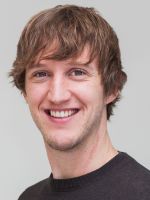
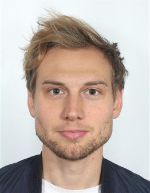
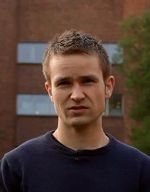
.jpg?alt=listing)
